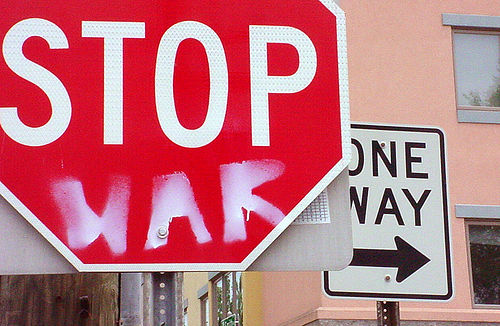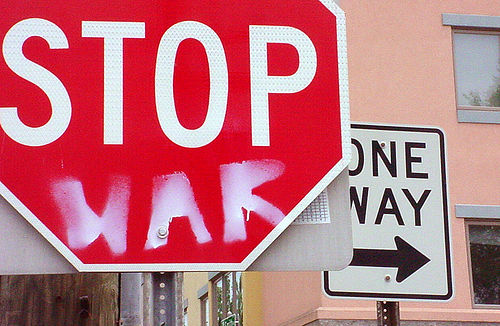 Photo: IdiolectorCongested, dirty, dangerous cities.
Photo: IdiolectorCongested, dirty, dangerous cities.
Soulless, dull, alienating suburbs.
This old pair of stereotypes has fueled countless debates, not to mention movies. And the sides have become increasingly entrenched over the years. (Does Escape from New York validate your world view? Or American Beauty?)
But as the rate of suburban poverty increases in the United States and those suburbs become more racially diverse, and as the nation’s most prosperous cities become more expensive to live in and more dominated by typically suburban fixtures like chain stores, it may be time to ask whether the dichotomy needs to be revisited.
This is especially true because the environmental stakes involved are so high. The built environment — how much land we take up, how much fuel we use to get around, how our homes are constructed and powered — is emerging as a crucial factor in the battle to reduce carbon emissions. Maybe the crucial factor.
On the cities side you have people like Andrés Duany, the father of New Urbanism. In a recent piece in the Washington Post, Duany, along with co-author Jeff Speck, argued the importance of creating government policies that encourage people to move from auto-dependent suburbs to walkable city centers:
What seems least often mentioned in the discussion of climate change and our “carbon footprint” is the role of city planning. The sustainable-building movement is fixated on gizmos — “what can I buy for my house to make it greener?” — but the thing that really matters is location. Households in downtown Chicago produce one-quarter the greenhouse gases of households in nearby suburban Kane County, and that’s not because of more efficient appliances. Yet with all the investment in a low-carbon future, how much money is used to encourage migration to city centers? …
American suburbanization did not happen by accident; it was heavily subsidized by federal and state dollars, most powerfully in the form of highway funds. The first step to a solution is to reduce incentives for sprawl, including new highways or highway lanes. If we have learned one thing from the suburban experiment, it is that you can’t grow a green economy on blacktop.
On the other side of the debate are those who see any effort to favor cities over suburbs through planning policy as nothing less than an assault on personal freedom (the word war comes up a lot). Take Joel Kotkin, whose influential New Geography website often carries the inflammatory work of sprawl apologists such as Wendell Cox, author of War on the Dream: How Anti-Sprawl Policy Threatens the Quality of Life.
Here’s what Kotkin wrote on his own blog in January 2010 about the Obama administration’s policy proposals, which he termed “war on suburbia”:
In everything from land use and transportation to “green” energy policy, the Obama administration has been pushing an agenda that seeks to move Americans out of their preferred suburban locales and into the dense, transit-dependent locales they have eschewed for generations …
Ultimately, the war against suburbia reflects a radical new vision of American life which, in the name of community and green values, would reverse the democratizing of the landscape that has characterized much of the past 50 years. It would replace a political economy based on individual aspiration and association in small communities, with a more highly organized, bureaucratic, and hierarchical form of social organization.
In some ways we could say forced densification could augur in a kind of new feudalism, where questions of land ownership and decision making would be shifted away from citizens, neighbors, or markets, and left in the hands of self-appointed “betters.” This seems strange for an administration — and a party — whose raison d’être ostensibly has been to widen opportunities rather than constrict them.
Can the gap between these points of view be bridged? Should we even try?
In an interview with Jonathan Hiskes earlier this year, Worldchanging‘s Alex Steffen said he thought not (note he also uses the word war):
I think [green groups] don’t want to portray sustainability as something that is in juxtaposition to sprawling, auto-dependent lifestyles. There’s a sense of, “We don’t want to be in a war with the suburbs.” But I think the war is here, I think it’s at our door. And we didn’t start it.
We are in a situation where we have an opposition party, essentially running the U.S. government, that is willing to say things like, “Climate change is a hoax.” It represents a minority of Americans. It’s completely beholden to big business and is very clearly using xenophobia, racism, and fear of change to block environmental, climate, transportation, and energy action. Basically, they are making this about, “Do you really want urban people destroying your way of life?”
The idea that this is not already a fundamental conflict and that we can somehow squeak this by the suburbs is foolish. It’s a false hope …
One of the real problems is that we’ve spent the last ten years trying to convince that group that there is a vision of this future that is going feel to feel OK to them. I’m no longer convinced that there’s a vision of the future that will ever feel OK to them.
But as the political situation becomes ever more polarized and frozen, is there anything to be gained by framing the cities vs. suburbs conflict as just another culture war to be conducted at the federal level? Can we instead find a way of identifying common interests and working toward those, perhaps by focusing on local efforts first?
Think of it in terms of the abortion question. Back in the 1990s, a group called Search for Common Ground launched a project to begin dialogue between people on opposite sides of that question. Although that debate rages on, sometimes violently, the project did serve as a model of civil discussion.
Maybe it’s time to search for some common ground between suburban boosters and city-lovers. In the weeks and months to come, we’ll be asking scholars, activists, politicians, authors, and people like you what they think about the urban-suburban divide. Get us started in the comments here.



